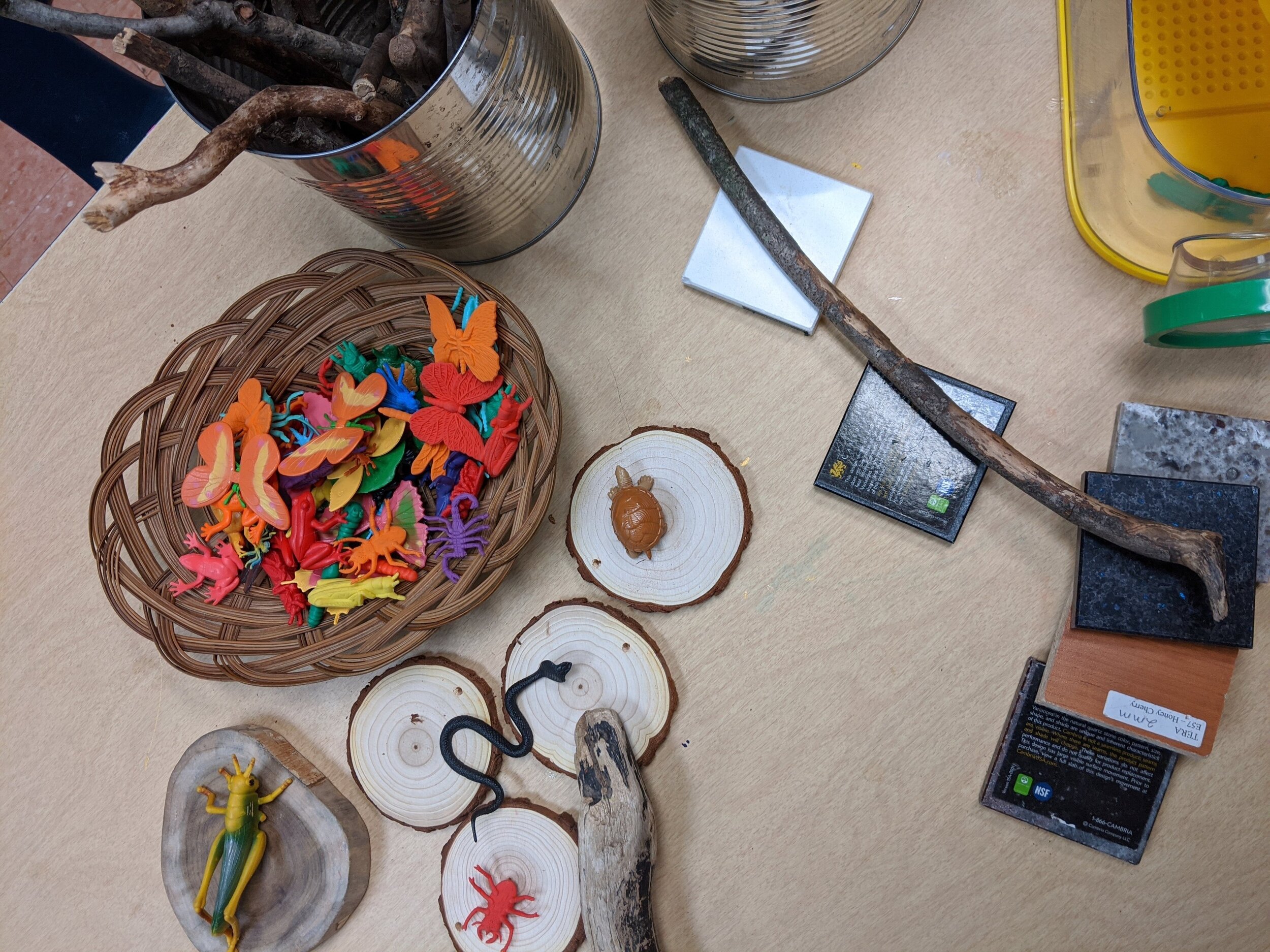
Loose Parts
Loose parts is not a new concept. Children have been playing with sticks and stones, perfect examples of loose parts, for what we could describe as “forever”. However it was in 1971 that architect Simon Nicholson developed The Theory of Loose Parts. He believed that children are innately creative and engage in crucial learning experiences while creating.
Loose parts are mostly not finished products, can be moved around and are used in endless ways. Many times we can find them within our center and within the homes of our families. There is no right or wrong with loose parts. These open-ended material encourage children to explore, experiment, design, create and construct. They provide the opportunity to figure out that there are different ways of doing things and to be resilient when things don’t work out.

“In any environment, both the degree of inventiveness and creativity, and the possibility of discovery, are directly proportional to the number and kind of variables in it.”
- Simon Nicholson
The opportunity to engage with a variety of open-ended materials provides endless creative learning experiences and promotes development across many areas:
Problem Solving
Creativity
Hand-eye coordination
Fine motor development
Gross motor development
Language and vocabulary growth
Mathematical thinking
Literacy
Social/emotional development

“The wider the range of possibilities we offer children, the more intense will be their motivations and the richer their experiences.”
— Loris Malaguzzi











